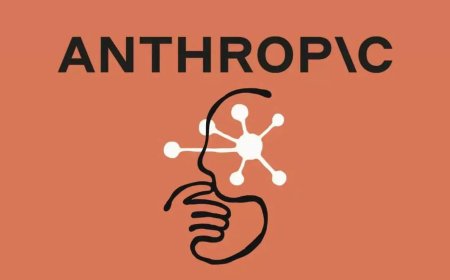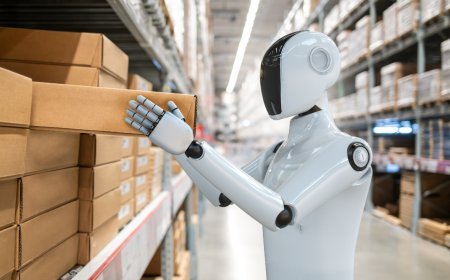Meet the AI-Powered Stuffed Animals Revolutionizing Playtime!

As technology continues to evolve at an unprecedented pace, the intersection of artificial intelligence and childhood engagement has birthed a new trend: A.I. chatbots encased in adorable plush toys. This innovative fusion aims to provide children with a screen-free alternative to traditional digital interactions. However, while the concept may sound charming and beneficial, there are significant considerations that raise questions about its viability as a substitute for screen time.
The allure of A.I. chatbots packaged in plush toys is compelling. On one hand, they promise a more tactile and physical experience for children, merging the worlds of emotional connection and technology. These cuddly companions, often designed to resemble popular characters or animals, aim to facilitate learning and creativity without the need for screens. The appeal is clear: parents are increasingly concerned about excessive screen time and its associated risks, including diminished attention spans, sleep disruption, and a host of developmental issues.
According to the American Academy of Pediatrics, children aged 2 to 5 should be limited to one hour of high-quality programming each day. For parents grappling with this guideline, plush A.I. companions appear to offer a solution. Rather than passively consuming content through a tablet or smartphone, children can engage in interactive conversations, storytelling, and even educational games—all while snuggling with a plushie. Yet, despite the apparent benefits, there are underlying complexities that deserve scrutiny.
First, let’s consider the functionality of these A.I. chatbots. Many of these toys utilize natural language processing algorithms, enabling them to understand and respond to children's queries. This can create an illusion of companionship and understanding, which is particularly enticing for young users. However, the effectiveness of these interactions can vary significantly based on the sophistication of the underlying technology. While some plush A.I. toys are equipped with advanced chatbots that can hold a basic conversation, others may struggle with context or nuance, leading to frustrating experiences for both children and parents.
Moreover, there is the question of content moderation. Unlike traditional screens, where parents can more easily monitor what their children are exposed to, A.I. plush toys often operate in a less controllable environment. The responses generated by chatbots can sometimes be unpredictable or inappropriate, especially if they haven’t been adequately trained on child-friendly content. This unpredictability can lead to concerns about what information children are receiving and how it shapes their understanding of the world.
Another pivotal aspect to consider is the emotional impact of these toys. While the idea of a plush A.I. companion sounds heartwarming, it can inadvertently foster unrealistic expectations regarding relationships. Children may develop attachments to their plush A.I., perceiving them as friends. This can lead to confusion when it comes to distinguishing between real human interaction and programmed responses. Experts in child psychology warn that while such toys can provide comfort, they should not replace genuine connections with family and peers.
Furthermore, the potential for over-reliance on these toys is a significant concern. Children may lean heavily on their plush companions for social interaction, leading to a decrease in face-to-face communication skills. Social interaction is critical for developing empathy, emotional intelligence, and conflict resolution skills. While A.I. chatbots can simulate conversation, they lack the depth and emotional nuance that human interactions provide.
It's essential to highlight that technology itself isn't the enemy; rather, it is how we implement and integrate it into our lives that matters. For instance, educational A.I. chatbots can certainly be beneficial when used in moderation alongside traditional play and human interaction. Programs designed to enhance STEM learning or language development can provide enriching experiences for children when they complement, rather than replace, hands-on activities and real-life socialization.
Moreover, parents play a crucial role in mediating their children's interactions with technology. Setting boundaries around the use of plush A.I. companions can help ensure that they complement rather than dominate a child's playtime. By engaging in conversations about the limitations of A.I. and the importance of human relationships, parents can help their children navigate this new landscape in a healthy way.
As this technology continues to develop, the industry must prioritize transparency and safety. Companies producing these plush A.I. toys should ensure rigorous testing and content moderation to create a safe environment for children. Additionally, they should provide clear guidelines for parents regarding appropriate usage and potential limitations of these products.
In conclusion, while A.I. chatbots embedded in charming plush toys offer a novel approach to combatting screen time, they are not a catch-all solution. The balance between technology and human interaction is delicate, and as parents, educators, and developers, we must tread carefully. Embracing the potential of A.I. can undoubtedly enhance children's learning experiences, but it should never come at the expense of authentic connections and traditional forms of play. Ultimately, the goal should be to integrate technology in a way that enriches lives without overshadowing the fundamental human experiences that shape us all.
What's Your Reaction?
 Like
0
Like
0
 Dislike
0
Dislike
0
 Love
0
Love
0
 Funny
0
Funny
0
 Angry
0
Angry
0
 Sad
0
Sad
0
 Wow
0
Wow
0
































